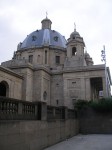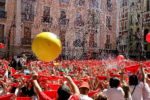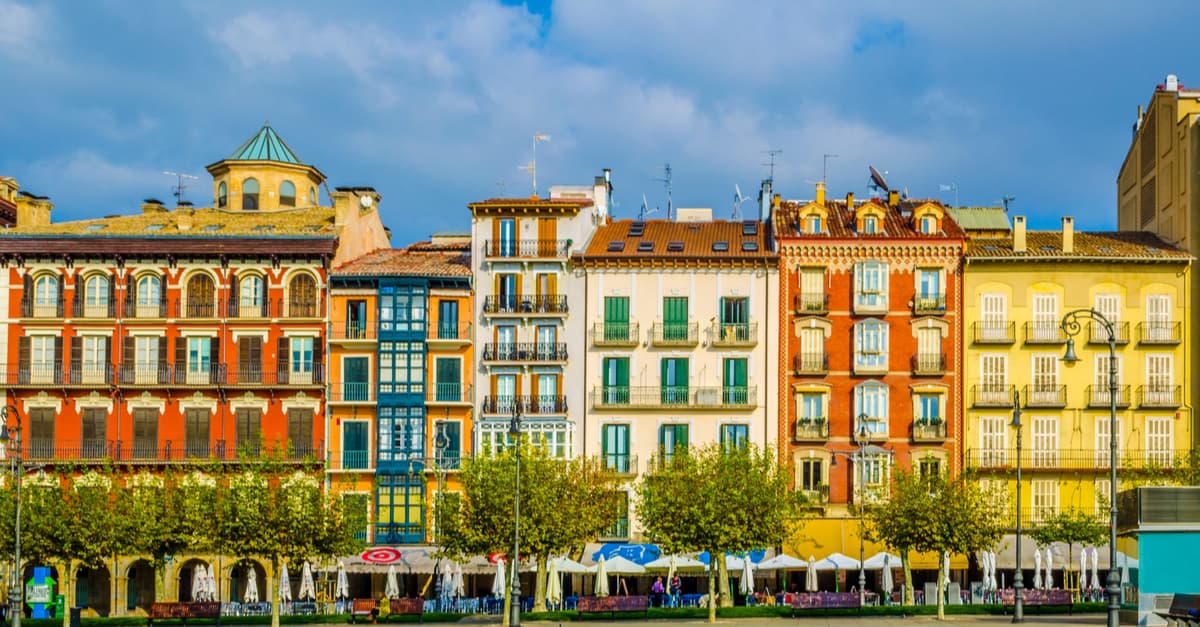
The old city is beautiful and worth spending sometime in. If you have forgotten anything there are many shops in the city, it is a modern metropolis with all services that you would expect. The cathedral is only a short distance from the main albergue and worth visiting.
San Fermin Fiesta and Bull Run

What to see and do in Pamplona
The tapas bars here are the best you will find until Santiago, not cheap though. The main square is surrounded by cafes and peaceful in the early evening for coffee and cake.
The Cathedral is tucked away among narrow streets in the north-east corner of the old town, the cathedral is not an immediately impressive edifice. The classical west facade (added in the 18th century) is gaudily amusing and the original Gothic wooden doors of the north porch are still there to be seen, but most of the interest lies inside — and it is quite likely to be locked. There are several small chapels around the apse and along the sides, with notable works of art dating from the 14th, 15th and 16th centuries; in the Capilla Mayor are fine carved stalls. In the nave is the beautifully carved alabaster tomb of King Carlos III and his wife Leonor of Castile. The Gothic cloisters, reached from the south transept, are unusually gracious and grand, with interesting doorways and other carvings. From the north door of the cathedral it is only a few yards to the old walls of the city, with views of the new Pamplona rising up across the river Arga, and of the low hills beyond to the north; following the walls anticlockwise brings you to the museum.
Museo de Navarra from what we read this sounds a more than average interesting provincial museum, with archaeological finds (Roman mosaics), an ethnological collection, Romanesque details saved from the original cathedral building and paintings ranging from the Romanesque period to the 18th century. Sadly it was closed for renovation when we were there.
The town hall façade may be architecturally undistinguished but it has been painted up a treat.
History of Pamplona
It is believed that Pamplona was founded in 74BC by general Pompey when the area was used as a camp. However it took another 1,000 years before Pamplona started to flourish under the rule of Sancho III who was also a promoter of the Pilgrimage Road to Santiago. During the first 1,000 years the city was destroyed several times as battles were fought here between invading armies.
Pamplona was attractive to foreign artisans and merchants due to the privileges granted to them by the crown and the financial opportunities provided by its location and links with the Camino de Santiago.

I love hiking, backpacking, and camping. From the Camino de Santiago to the West Highland Way in Scotland or simply a great day hike on the weekend. Hiking refreshes me, my mind, and keeps my body reasonably fit. So far I have walked three Camino routes and many other long distance hikes in the UK, Canada, and around the rest of Europe. One of the best was my hike up Ben Nevis.

